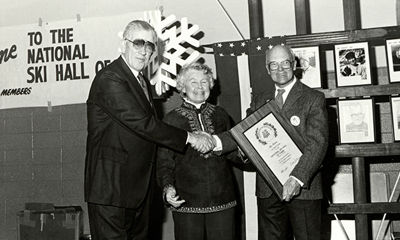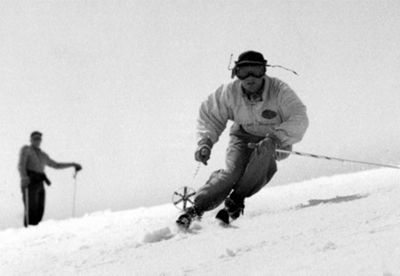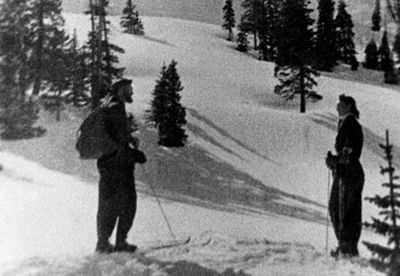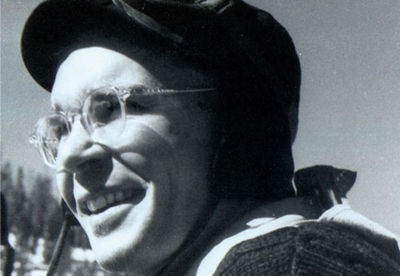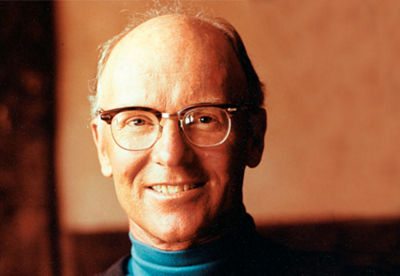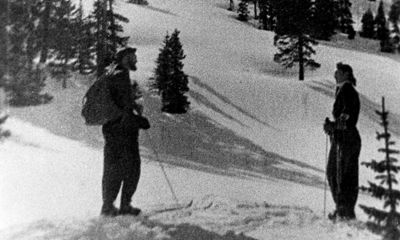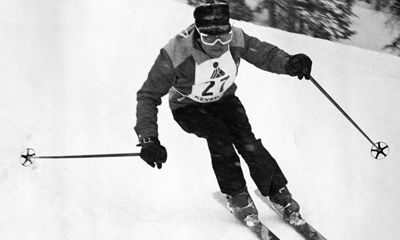As you ski and ride Keystone, you'll see some strange lift and trail names … like "Lower Gassy," "Jackwhacker," and "Saw Whiskers." Many of them reflect the area's rich logging and mining history, and some were named after the people who lived here a long time ago.
Jackwhacker
A burro racer. The miner who drove the ore-laden burros or "jacks" with a long whip was known as a whacker (thus the name). This is also the name of a lake at the head of Geneva Gulch.
Flying Dutchman
A mine. One of the investors, a Pennsylvania Dutchman, was an old timer back at the turn of the century. His parents were very poor and belonged to the "cracker class," a name given to them because they lived principally on cracked corn and wild game, which they secured with the crack of their rifles.
The Dutchman was a small man, and his old patch and ball rifle were so heavy that he had rest when he shot. But the boys said he could shoot the eye out of man from a mile away.
Bachelor
A mine supposedly named after another Pennsylvanian by the name of Haverly. Haverly lost his parents as an infant, was raised by a country tailor, ran away when he was 12 years old, landed in Pittsburgh with $2 while barefoot but wearing a straw hat.
He started selling newspapers and later switched to the theatrical business. Mining and other speculation had an irresistible attraction so he also plunged heavily into mining. Immaculate in his dress, and polite as a Chesterfield, he was a welcome guest in society, which he chose to favor with the buoyancy of his presence.
Wild Irishman
An old productive mine in the Saints John's Basin area. In 1906, Terrence Connors, manager of the Wild Irishman, was elected President of the Mine Owners' Association of Montezuma—an association formed to protect mines from promoters who were peddling worthless mine stock. With usual Irish wit, it is said that one of his favorite sayings was, "You never heard an ass bray when he had grass."
Paymaster
The first mining claim in the Peru District on the south slope of Gray's Peak, which was incorporated under the laws of Maine with offices in Boston. A three-story boarding house was built beside the mine.
Frenchman
There were two Frenchmen in the Snake River and Peru Mining Districts. One located the Frenchman Mine high above Timberline on Collier Mountain. The other Frenchman claimed the Cornucopia on Porcupine Mountain just across from Independence Mountain and under the shadow of Keystone Mountain.
The second Frenchman was quite blind for many years, doing only the barest assessment work needed to hold the mine. He "holed-up in the winter," in a one-room cabin on Montezuma Road and was known for his kindness.
One day, he left his cabin and no one ever saw or heard of him again. One could say he was the original dropout, but most miners were at that point. Frenchman is also named after the French Canadians who hand cut all trails on Keystone Mountain, especially Cyrille, who alone cut over 110 acres (30 percent) in two years.
Schoolmarm
"Dimp" Myers, the son of an early Keystone settler and Civil War Colonel J.H. Myer, grew up near Keystone. Dimp fell in love with a Frisco school teacher who had just come over Argentine Pass in a stage coach, named the Schoolmarm mine after her in 1906 and then married her.
